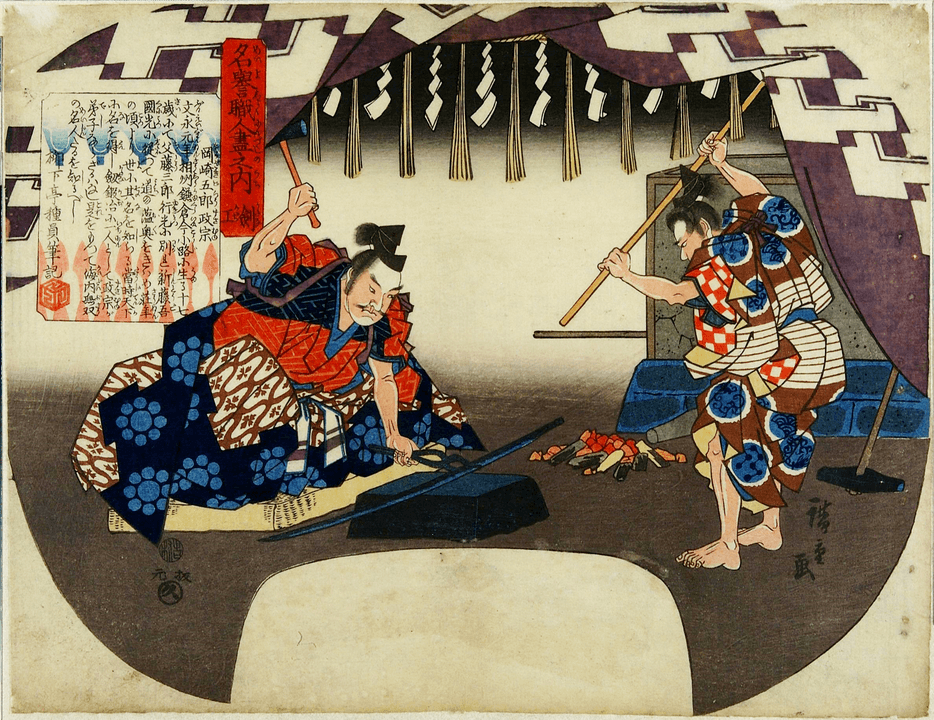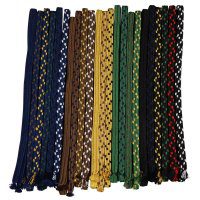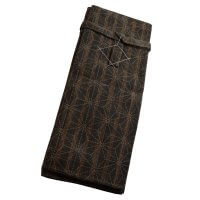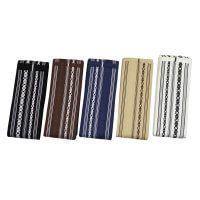The reputation of the famous blacksmith
Masamune is probably the most famous swordsmith in Japanese history. He is also considered by many to be the best blacksmith. In this article you will find some interesting information about the popular blacksmith.
Okazaki Masamune (priest's name: Goro Nyudo Masamune), known as Masamune, worked as a blacksmith in the province in the late 13th century and early 14th century. Sagami (Soshu). Historically, his life fits into Japanese history from the late Kamakura period to the early Nambokucho. The blades he forged belong to the so-called Koto blades, which can be translated as old swords.
The region in which he worked (Soshu) belongs to the Gokaden, the 5 great sword traditions in Japan. These 5 regions were Yamato, Yamashiro, Bizen, Soshu and Mino. These 5 regions and their masters had a particularly great influence on the development of the Japanese sword. Each region has its own history and outstanding blacksmiths.
Several high-ranking and well-known swordsmiths settled in Soshu. Kamakura is located in Soshu and was the seat of the ruling Kamakura Shogunate at the time. This event led to a demand for high-quality blades in the region and so the blacksmiths Awataguchi Kunitsuna, Ichimonji Sukezane and Saburo Kunimune, who were very well-known blacksmiths, also settled in Soshu. They came from the provinces of Yamashiro and Bizen, which also belong to the Gokaden.
These three influential blacksmiths shaped the swordsmithing tradition in the region. Shintogo Kunimitsu is considered to be the creator of the first blade in the pure Soshu tradition with his work from the 13th century. Masamune learnt from these famous Soshu masters.
The high reputation of the Japanese master blacksmith
Even if it is to some extent a matter of taste whether Masamune was really the best blacksmith of all time, his work is held in very high regard.
He has a special place in the history of the Japanese sword. Two examples of his special position among Japanese blacksmiths:
Reference for other forging work
Masamune is often used as a reference when describing other forging work. For example, a detail is "at the same level as Masamune" when describing an outstanding piece of work.
Forging award
Masamune is so highly regarded that there is even an award named after him at the regular blacksmithing competitions held in Japan.
Famous culturally valuable blades
He primarily forged tachi and tanto, as was customary at the time in which he lived. His blades have a high cultural value and are generally not allowed to leave Japan.
Blades that are attributed to him are special treasures and always bear his name. Examples include the tanto Fudo Masamune, which has an engraving of the god Fudo, who played a major role in samurai culture, or the three tanto Hocho Masamunewhich are classified as national treasures of Japan.
Even the sword Honjo Masamune comes from the blacksmith. It is considered to be one of the best samurai swords in Japanese history and belonged to the Tokugawa family, who ruled during the Edo period. Unfortunately, the sword has been missing since the end of the Second World War. This has excited treasure hunters and history buffs for decades, who believe that the sword still exists somewhere.
This report is somewhat sensationalist in parts, but it is interesting for superficial information:
The popularity of the blacksmith and his good reputation have existed for centuries. Unfortunately, this has led to many forgeries and copies of his swords being made. In many cases, the blacksmith's signature was simply applied to any sword. Such forged signatures are called gimei. However, some examples are also very similar to the master smith's work and differ only in minor details.
You should always look closely at blades that are attributed to him. Rumour has it that a total of around 3000 blades have been attributed to him in the past, which is an incredible number of blades produced by a single blacksmith.
The influence of Masamune
The blacksmith and the Soshu tradition had a great influence on the history of Japanese swordsmithing.
In addition to the blacksmith himself, there are 10 famous students who were taught directly by Masamune or were strongly influenced by the Soshu tradition and Masamune's work.
These 10 students are known as Masamune Juttetsu or also Masamune no Jittetsu. They include, for example, the famous blacksmiths Chogi and Kanemitsu.
He was also the teacher of Hikoshire Sadamune, who even bore part ("Mune") of his name. Although he is not one of the Juttetsu, he was also an excellent blacksmith.
The master's blades are generally not available on the open market. However, you can find swords of the Soshu-Den (Soshu tradition) in our Shop for old samurai swords.
Masamune Iaito in our online shop
Due to the fame of the blacksmith, we have also dedicated an Iaito in our shop to this master. Of course, the blade is made of zinc-aluminium, as is usual with Japanese Iaito, so it is not the work of the master.
The applied Hamon is known in Japan as Masamune Hamon. You can find the model here.





